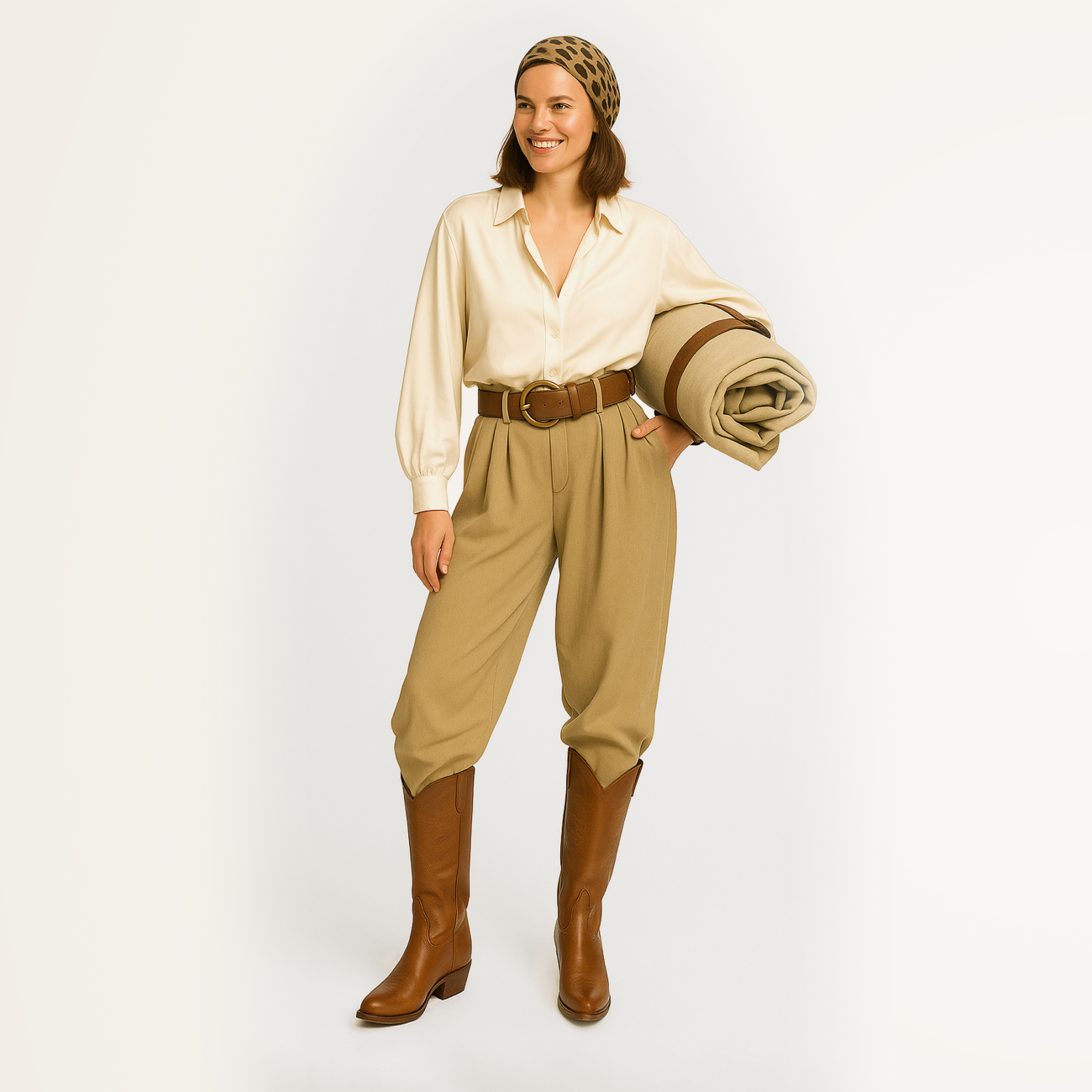Colonial
Colonial style is a unique blend of the exotic allure of distant lands and the refined elegance of European traditions. It was born from a spirit of curiosity and exploration, embodying adventure and a love for travel. Colonial style merges comfort with luxury, simplicity with sophistication, and reflects a desire to discover new worlds while remaining loyal to practicality and ease. This style appeals to those seeking harmony between nature and civilization, who value artisanal craftsmanship and are drawn to surrounding themselves with pieces that carry a sense of history.
History
Colonial style originated during the Age of Exploration, when European countries established colonies in Africa, Asia, and the Americas. Travelers and settlers brought with them familiar household items, furniture, fabrics, and clothing, but the local climate and available materials inevitably left their mark. The classic European wardrobe was enriched with exotic elements, lighter fabrics, and looser silhouettes to adapt to hot and humid climates. In the 18th and 19th centuries, colonial style gained popularity among the upper classes, who sought to infuse their daily lives with the spirit of distant journeys and romance.
Signature elements of the style
Color palette
Natural, muted tones inspired by tropical landscapes — sandy beige, cream, ivory, leafy greens, ochre, and terracotta.
Prints
Signature prints include botanical and animal motifs that reflect the flora and fauna of exotic places. Palm leaves, vines, tropical flowers, and geometric patterns drawn from indigenous cultures are especially popular.
Textures
Light, natural fabrics such as cotton, linen, silk, and batiste are key. For cooler climates, wool and leather are incorporated. Coarser materials evoking artisanal craftsmanship — like jute and raffia — are also used.
Cuts & silhouette
Loose, comfortable, non-restrictive silhouettes. Simplicity of lines, practicality, and ease of movement are central. Think wide-leg trousers, airy shirts, long dresses, and flowing skirts.
Wardrobe essentials
- Shirt with patch pockets and belt — a classic colonial style piece combining practicality and elegance.
- Cargo pants or pocketed shorts — often paired with a leather or fabric belt.
- Lightweight trench coat — perfect for cool evenings, adding a touch of European refinement.
- Maxi dresses made of cotton or linen with a belt and simple silhouette, evoking ease and effortlessness.
- Accessories: Wide-brimmed hats, belts with metal details, textile bags with botanical prints, lightweight scarves, straw hats and woven bags.
Substyles
Email: support@belt-app.com

















